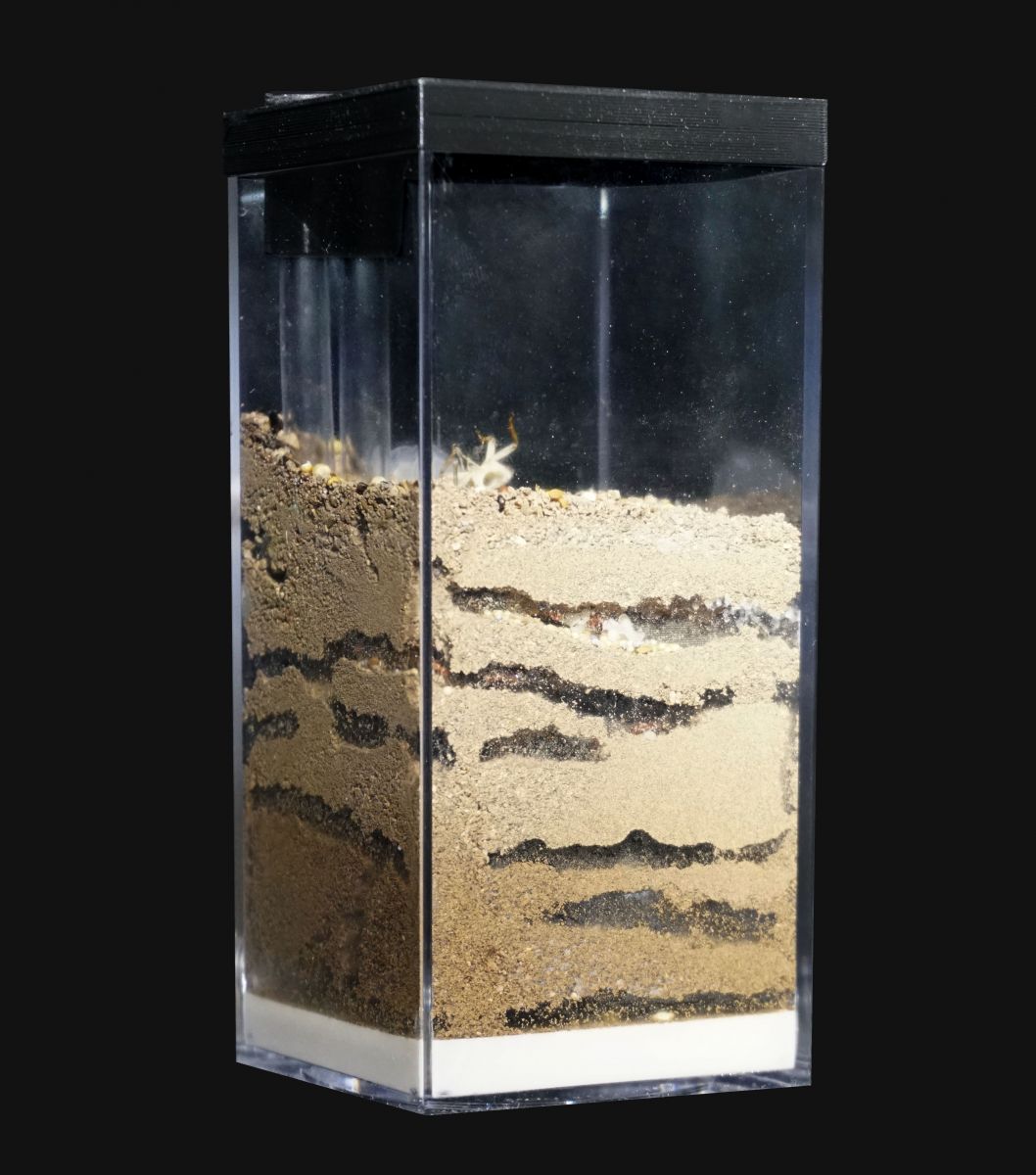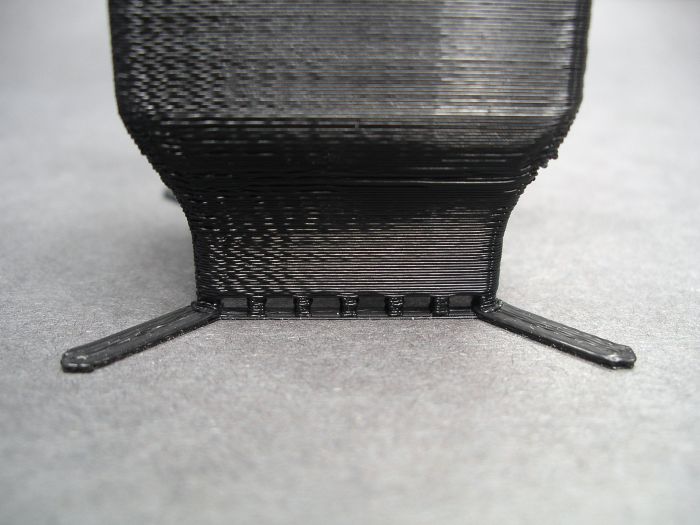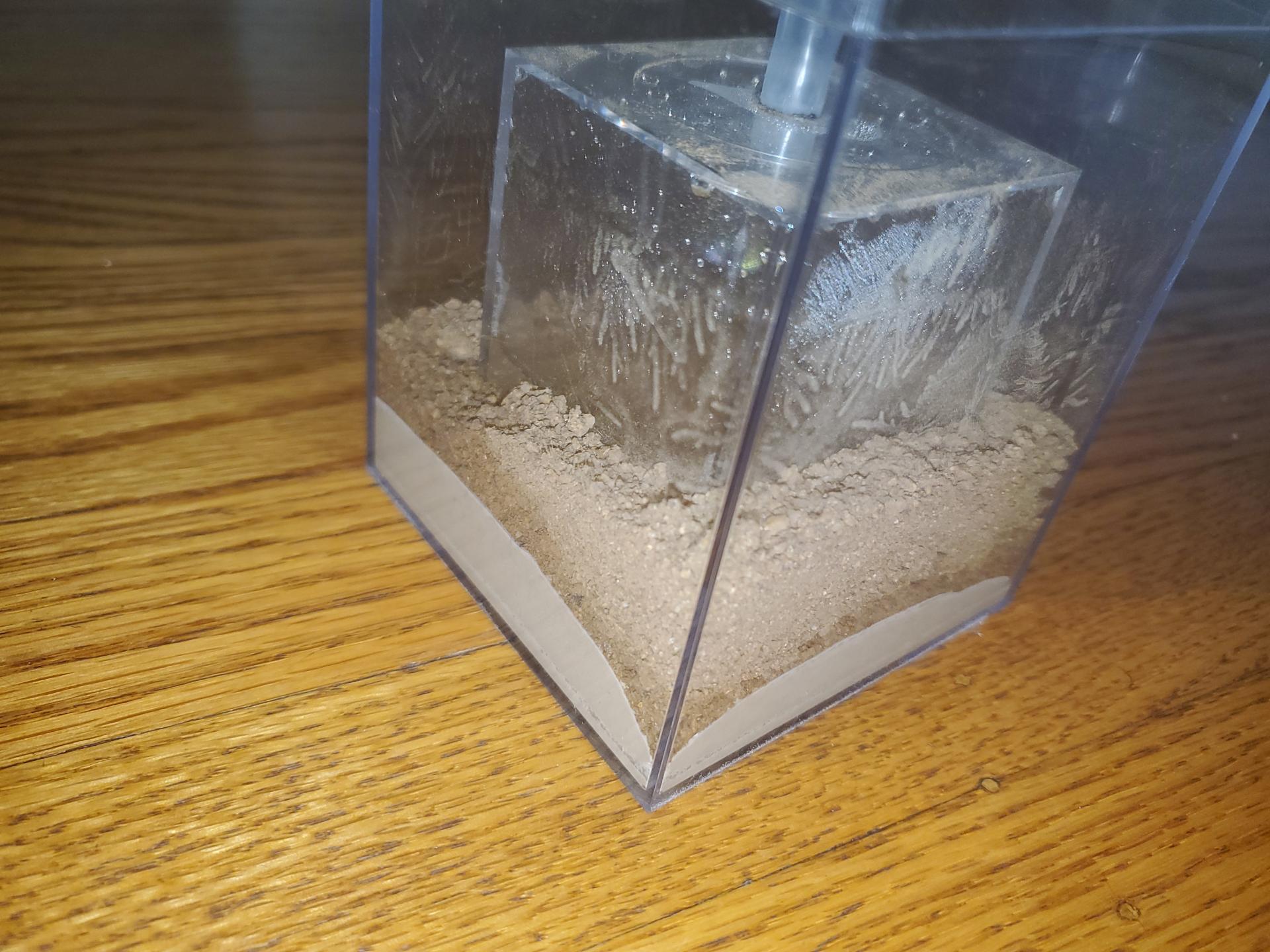dspdrew, on 19 Feb 2016 - 5:31 PM, said:
My bottled water tastes great. I only drink it when it's been in the fridge.
Quality Drew water! Only $12.99 per gallon. Great for physical activities? Get your water now!!!

Hello -
I am new antkeeper and pleased to say I have setup my new dirt box (Dirt Box, Natural Ant Farm, Formicarium #4 Size, Black/Natural Desert Sand, Small (2.4x2.4x5 in.) and it's looking very cool. I did the initial hydration and setup and it's waiting for new occupants.
Meanwhile, I have a Lasius niger queen that went into diapause with 1 worker and since coming out she's got 7 workers and a pile of brood! But, her test tube is looking a mess. Plenty of water but they keep dragging the food around and there are lots of tiny insect parts, some cotton, and other debris that are getting all over the place. There are some dark 'dots' that are increasing in number that I'm pretty sure it's molding in there, mostly closer to the water side than the ventilation side.
I was thinking maybe they could move into the dirt shack. I wanted to ask:
1) would L. Niger queen with 7 workers be good candidates to move in there? I don't want to force a young queen to move out but it looks nasty in her test tube.
2) what is the best way to move them? there is a tiny port , for expansion, but I didn't see what size it was and it doesn't seem to match any tubing I have around. How to migrate them from test tube into the dirt shack?
Any advice much appreciated ![]()
thank you!
Lasius should be fine in a #4 Dirt Box. I don' have much experience with Lasius, but if they dig in captivity when put in dirt, I would just dump the colony into the formicarium. The workers will find all the brood and pile it up somewhere for the time being. Hopefully then the workers will dig a nest and eventually move the queen in. If you just set the formicarium up, it should all be wet, even on the surface, which is what you want if you do this, that way they stay hydrated while digging their new nest.
dspdrew, on 29 Apr 2019 - 02:06 AM, said:
Lasius should be fine in a #4 Dirt Box. I don' have much experience with Lasius, but if they dig in captivity when put in dirt, I would just dump the colony into the formicarium. The workers will find all the brood and pile it up somewhere for the time being. Hopefully then the workers will dig a nest and eventually move the queen in. If you just set the formicarium up, it should all be wet, even on the surface, which is what you want if you do this, that way they stay hydrated while digging their new nest.
Thanks for this feedback. I am a little worried to dump the tube in because I tried this once before, and it was very tough to get the eggs out of the tube - they were stuck to the walls and i wound up using a thin wire to get them out. But, I definitely damaged some of them on the way, and I'm pretty sure some were lost in the cotton. There is a ton of brood in there and brand new workers that are so tiny, I don't want to hurt them. Also there is a lot of debris in there so it will be even harder to see and deal with.
I am wondering if it would be easier on the ants (and lower mortality rate) if I connected the test tube to the dirt box, then made the dirt box warmer and darker than the test tube and hopefully they'll move over themselves. I'm not in a hurry so hopefully they'll make the move themselves. But, what is intended to connect to the port on the dirt box?
Edited by PaxxMantid, April 29 2019 - 6:45 AM.

Where do you get those awesome sponges?
Currently Keeping:
Pogonomyrmex Californicus Bicolor & Concolor
Pogonomyrmex Subnitidius
Camponotus Sansabeanus
dspdrew, on 21 Jun 2020 - 06:46 AM, said:
Perhaps those in your founding formicaria?Broncos, on 14 Nov 2019 - 02:00 AM, said:
Where do you get those awesome sponges?
What sponges?
"God made..... all the creatures that move along the ground according to their kinds (including ants). And God saw that it was good. Genesis 1:25 NIV version
Keeping:
Formica cf. pallidefulva, cf. incerta, cf. argentea
Formica cf. aserva, cf. subintegra
Myrmica sp.
Lasius neoniger, brevicornis
Thanks for documenting this design and research so well Drew. Question though — are there any issues with the water being in contact with the hydrostone in the bottoms for long periods of time? I know you demonstrated that erosion/melting/whatever happens with the hydrostone in your fungus-grower set up
mmcguffi, on 30 Jan 2021 - 05:11 AM, said:
Thanks for documenting this design and research so well Drew. Question though — are there any issues with the water being in contact with the hydrostone in the bottoms for long periods of time? I know you demonstrated that erosion/melting/whatever happens with the hydrostone in your fungus-grower set up
I have never had a problem for as long as these last. I'll probably be changing the design slightly, adding ceramic tiles to these as well.
Old thread but how does the water seep from the smaller inner container to the dirt in the outside? do you drill small holes in the inner container?
buglover123, on 17 Apr 2022 - 12:39 AM, said:
Look up capillary action. It’s how your towel works and how trees take water up from the soil high into their canopies. Butterfly mouthparts work via the same principle.Old thread but how does the water seep from the smaller inner container to the dirt in the outside? do you drill small holes in the inner container?
ANTdrew, on 17 Apr 2022 - 10:06 AM, said:
buglover123, on 17 Apr 2022 - 12:39 AM, said:
Look up capillary action. It’s how your towel works and how trees take water up from the soil high into their canopies. Butterfly mouthparts work via the same principle.Old thread but how does the water seep from the smaller inner container to the dirt in the outside? do you drill small holes in the inner container?
Yes but for capillary action to work, there needs to be some kind of opening/connection for liquid to flow. I am wondering where exactly that opening or connection is in this setup for water to go from the inner container out into the dirt/ant colony.
buglover123, on 17 Apr 2022 - 10:35 PM, said:
ANTdrew, on 17 Apr 2022 - 10:06 AM, said:
Yes but for capillary action to work, there needs to be some kind of opening/connection for liquid to flow. I am wondering where exactly that opening or connection is in this setup for water to go from the inner container out into the dirt/ant colony.buglover123, on 17 Apr 2022 - 12:39 AM, said:
Look up capillary action. It’s how your towel works and how trees take water up from the soil high into their canopies. Butterfly mouthparts work via the same principle.Old thread but how does the water seep from the smaller inner container to the dirt in the outside? do you drill small holes in the inner container?

I gave this a shot myself but the hydration doesn't seem to be working properly, I am clearly fumbling something.
After 48 hours (most of the water is still in the inner cube if you can't tell by the dirt):
I am using unsanded grout instead of hydrostone since I already have a bunch I use for my formicariums. I wanted to test this design before filling everything up so I put about an inch of water in the inner cube and filled a little it of dirt on the outside. It seems like after the first 24 hours some water did seep through the bottom which is great, but the water has either stopped seeping or become obscenely slow to move. Do you think the problem is using grout instead of hydrostone? The only other thing I can think is maybe I put too much grout, I put close to an inch of it. Thanks again, for all your help.
Edited by buglover123, April 26 2022 - 11:00 AM.
Sounds like grout doesn't absorb water very well.
Ant Keeping →
General Ant Keeping →
A Nest IdeaStarted by cooIboyJ , Mar 22 2025 |
|

|
||
Market Place →
General Market Place →
Trade: 3D-Printing Service for your Queens/Colonies (Los Angeles, CA)Started by JonathanH , Mar 4 2025 |
|

|
||
Market Place →
General Market Place →
Ender Ants: Naturalistic Formicariums & MerchandiseStarted by Ender Ants , Feb 7 2025 |
|

|
||
Ants & Myrmecology →
General →
Starting off a shopStarted by OwlThatLikesAnts , Feb 3 2025 |
|

|
||
Ant Keeping →
General Ant Keeping →
Will ants tear through newspaper to expand their space?Started by Demomyrmex , Jan 26 2025 |
|

|
0 members, 1 guests, 0 anonymous users